The Last Mustard Maker in Dijon
Nicolas Charvy is bringing a culinary art back to its ancestral home.
On a sunny afternoon in the heart of Dijon, just steps from the lucky stone owl that gives rue de la Chouette its name, the last Dijon mustard maker in the city has been at work for just under an hour. By the time I step into the diminutive shop, Nicolas Charvy has already soaked the tiny mustard seeds in a mixture of water, salt, vinegar, and white wine to make what he terms “our verjuice,” a stand-in for the more traditional juice of the tart Bourdelas grape (a historic variety that once grew throughout Burgundy, but has now been largely abandoned, in part due to the fact that, according to Les Cépages, it makes wine that is “frankly bad”).
In the middle of the afternoon, the Edmond Fallot shop is bustling with activity: Tourists fill their baskets with local specialties such as gingerbread or crème de cassis, but they mainly flock to the mustard, available in a range of varieties. In the heart of the small store, Charvy is hard at work, pouring the soaked mustard seeds into a custom-made stone-grinder, which dominates the space. A thick paste oozes in irregular dollops from the grinder’s spout, plopping into a large ceramic jar placed underneath. As tempting as it looks, Charvy tells me, it’s far from palatable: It will take at least a week of fermenting before the natural spice of the mustard overtakes its bitterness, and it will be ready to enjoy.
Charvy is the latest in a long line of local mustard makers in Dijon, a status first protected here in the 1600s. Following the 2009 closure of the Amora-Maille factory, he also became the last.
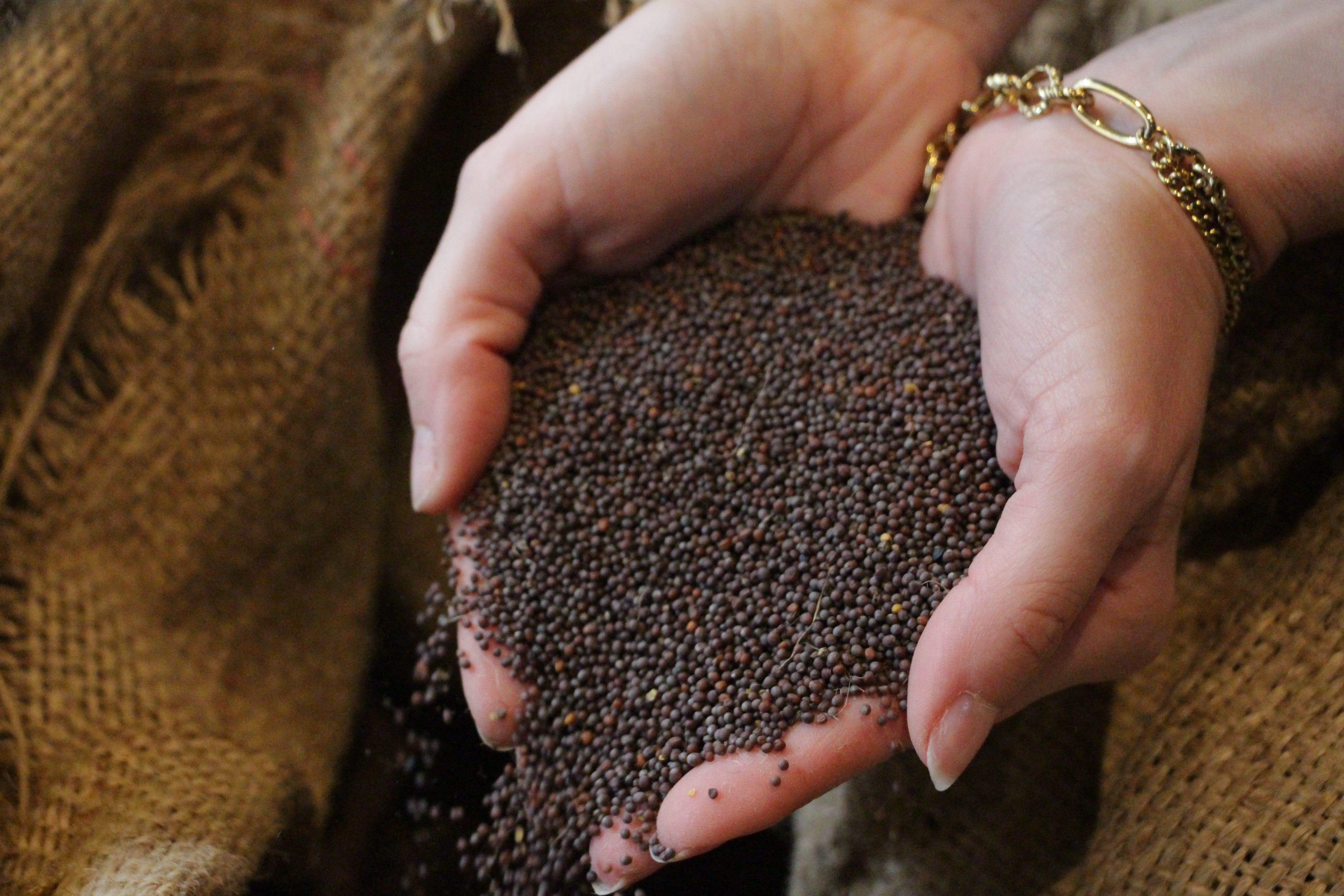

If mustard has long been linked to Dijon, it’s mainly thanks to the local availability of mustard seeds, first coplanted with grapevines by ancient Romans and persisting thanks to 17th-century charbonniers, who produced coal in open fields, providing natural fertilizer for cruciferous plants such as mustard. But following World War II, farmers turned instead to the production of botanically similar (and subsidized) colza, and Burgundian mustard seed cultivation fell nearly into extinction.
It was thanks in large part to efforts by Charvy’s business partner, Marc Désarménien, the current owner of the family-run Moutarderie Edmond Fallot, that the trade has been recovered, with about 300 independent farmers cultivating mustard across 6,000 hectares of Burgundian land, mainly in the Côte-d’Or.
Despite being a Dijon native, Charvy did not always intend to be a moutardier. After a first career in IT, he transitioned to work purveying local specialties ranging from wine to gingerbread at the nearby shop B Comme Bourgogne. It wasn’t until 2014 that he teamed up with Guillaume Vieillard and Désarménien to open this boutique—a satellite of the nearly two-centuries-old Moutarderie Edmond Fallot—and restore mustard-making to its rightful place in the heart of the historic city.

Oddly, Fallot has never been a Dijon-based brand. Founded in nearby Beaune, 50 kilometers away, by Léon Bouley in 1840, the company was purchased by Désarménien’s maternal grandfather, Edmond Fallot, in 1928. It has, however, always been a bastion of the recipe named for Dijon but beloved throughout Burgundy. These days, at its flagship factory, the company still relies on time-tested stone-grinding techniques that notably allow for cold processing, a boon for the heat-sensitive seeds. As a result, and as compared to other local Dijon mustards such as Maille or Amora, Fallot stands out for its slightly grainier texture and more potent flavor.
Unlike Désarménien, Charvy does not come from a mustard-making dynasty. Despite recently being sworn in as a member of the confrérie de la moutarde—the brotherhood of mustard—his career as a maître moutardier seems to be something the erstwhile IT professional stumbled into nearly by accident. But his previous experience has lent him a natural predilection for problem-solving that’s useful given the trial-and-error nature of his work.
“Each mustard, each batch, is a little bit different,” he says, evoking the “small adjustments” he is frequently called to make.
“Mustard production is a balance of the height [of the stone], of energy, and of the quantity of seeds you use,” he says. “That all contributes to getting to a proper mustard.”

Today’s batch (108, if you’re counting), however, is proving to be far from proper, emerging far too runny from the spout. But Charvy is unperturbed.
“I add some more seeds, I adjust it a bit,” he says with a shrug and a smile. “It takes time to get to the right consistency. We’ll need an hour or so for it to be perfect.”
This estimate stems from experience rather than any formal training. Charvy’s crash-course in mustard-making took place at Moutarderie Edmond Fallot’s flagship factory, where he learned the time-tested recipe and sought-after texture. But to hear him tell it, this initial introduction was just the tip of the iceberg. In Beaune, after all, mustard is being made on a far larger scale: about 20,000 jars of mustard per day, amounting to a yearly average of 2,300 tons, sold both at the company’s Dijon store and in specialty food shops and grocery stores across France. Charvy, by comparison, makes just 60 to 80 kilos at a time, a rhythm that, he says, has led him to be far more “interventionist” in tinkering with his recipe on each of his twice-monthly visits to the shop.
And he’s not just making mustard on those visits, either. “He’s also our electrician,” pipes in Florine Humbert, store manager.
Humbert and Charvy make a perfect pair of opposites, Charvy’s reserved, shy smile juxtaposed against Humbert’s bubbly exuberance. But they share more than a workplace. Humbert, too, came to mustard after a first career in accounting.
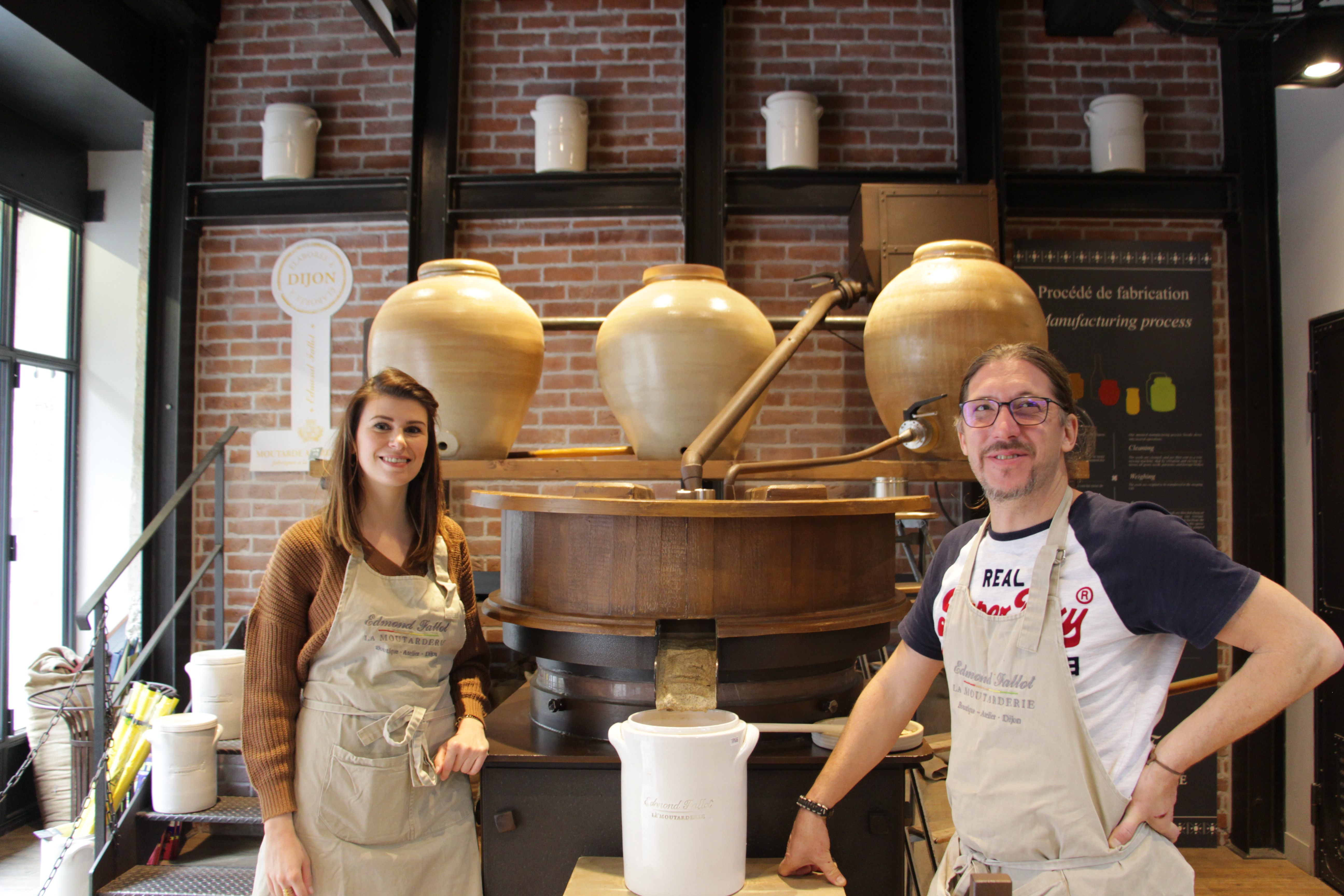
“I never thought to myself, growing up, ‘What if I worked with mustard?’” she says. But these days, she’s proud of the path her career has taken her on. “Especially with the artisan process. We really respect the work of master mustard makers of yore.”
They also seek to show it off. Charvy’s work at the shop is spurred less by the company’s production needs and more by a desire to return to tradition, both in bringing the time-tested craftsmanship to the heart of the city and, perhaps most importantly, in sharing these techniques with interested visitors. Locals and tourists alike linger by the massive machine as Charvy works, sometimes watching shyly, sometimes stepping forward with questions or simply to take a photo.
Compared to well-known Dijon mustard brands such as Amora and Maille, Fallot is relatively tiny—perhaps another reason why a presence in the center of Dijon was so important.
But the company’s smaller size has also been a boon, making it far easier to transition to exclusively Burgundian mustard seeds (a rarity in the French Dijon mustard industry, which currently sources about 80 percent of its seeds from Canada). Fallot’s commitment to local seeds meant that when international supply-chain disruptions left French mustard aisles empty this past summer, Fallot was the last Dijon mustard purveyor standing.
Of course, as a result, demand spiked and Fallot’s shelves emptied as well. Humbert spent the summer fending off miffed regulars.
“‘There’s no more Dijon mustard…even for us Dijonnais?’” she recalls them demanding.
This August, she even opted to close the shop for three days when the only available flavor of the 37 varieties they produce was a limited-edition cacao bean.
“It’s not everyone’s cup of tea,” she admits.
These days, however, stocks have returned at the shop. The shelves are lined with flavors ranging from mustard spiked with gingerbread spice to a sweet-and-savory marriage of honey and balsamic vinegar, the latter of which both Charvy and Humbert cite as their favorite.
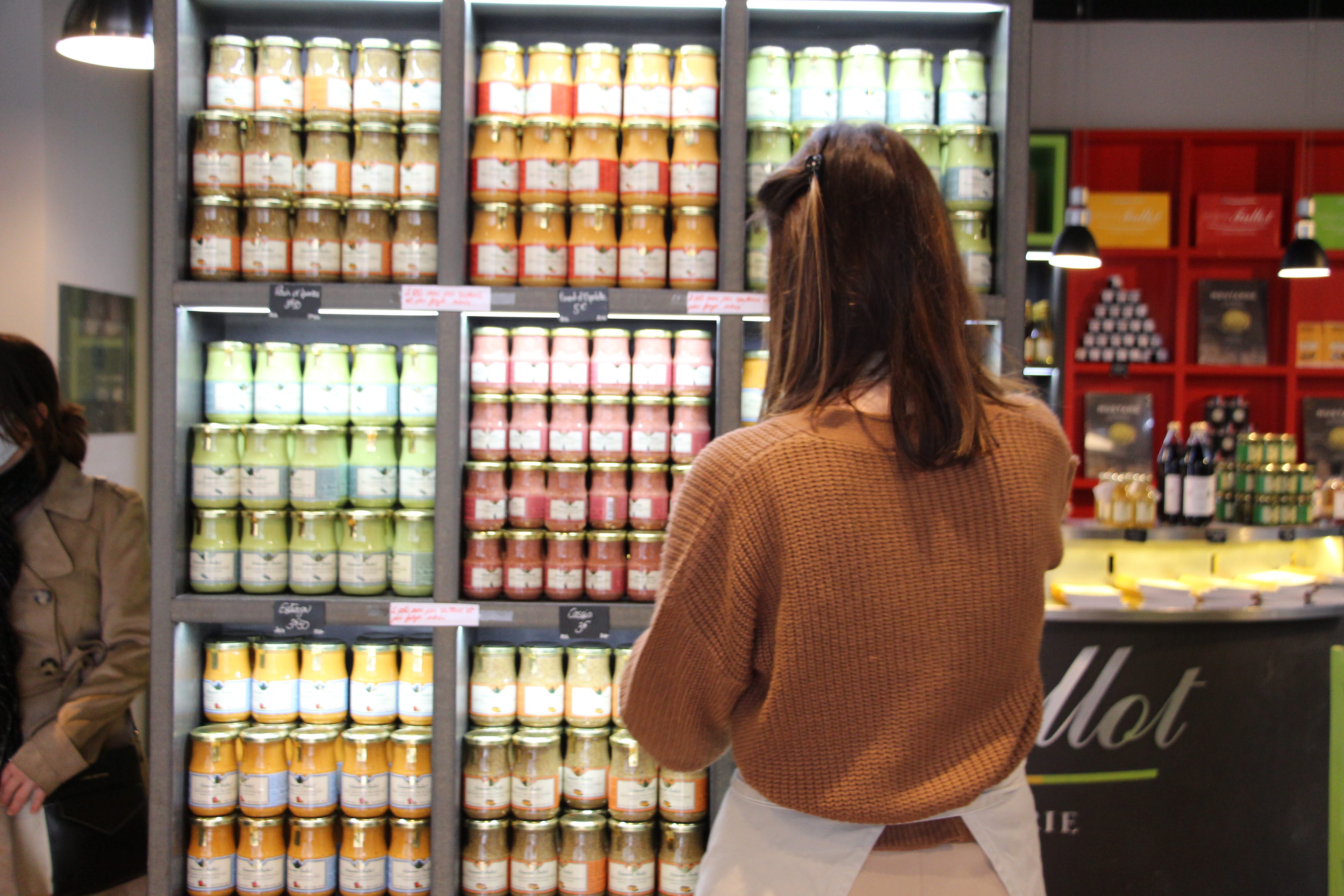
But the shop isn’t quite back to business as usual.
“We have to limit people to two jars per flavor per household,” says Humbert. “We want to make sure there’s enough for everyone.”
While quantities remain limited, Charvy, at least, is finally back to producing his signature: a coarse-ground mustard sold in terra cotta pots complete with an old-fashioned cork stopper, the label proudly boasting the AOC Meursault wine at its base.
“Since it’s a prestigious shop, we used a prestigious white wine,” says Humbert, who notes that the mustard also stands out thanks to its texture, which is grainier than most produced by Fallot. At the Dijon shop, sieving is foregone due to space constraints, resulting in a mustard halfway between smooth and grainy, with a profound spiciness and that balanced acidity Dijon mustard fans love.
“It’s unique to this shop,” says Humbert proudly. “You can’t find it anywhere else. Not in Beaune, not anywhere.”
Gastro Obscura covers the world’s most wondrous food and drink.
Sign up for our regular newsletter.



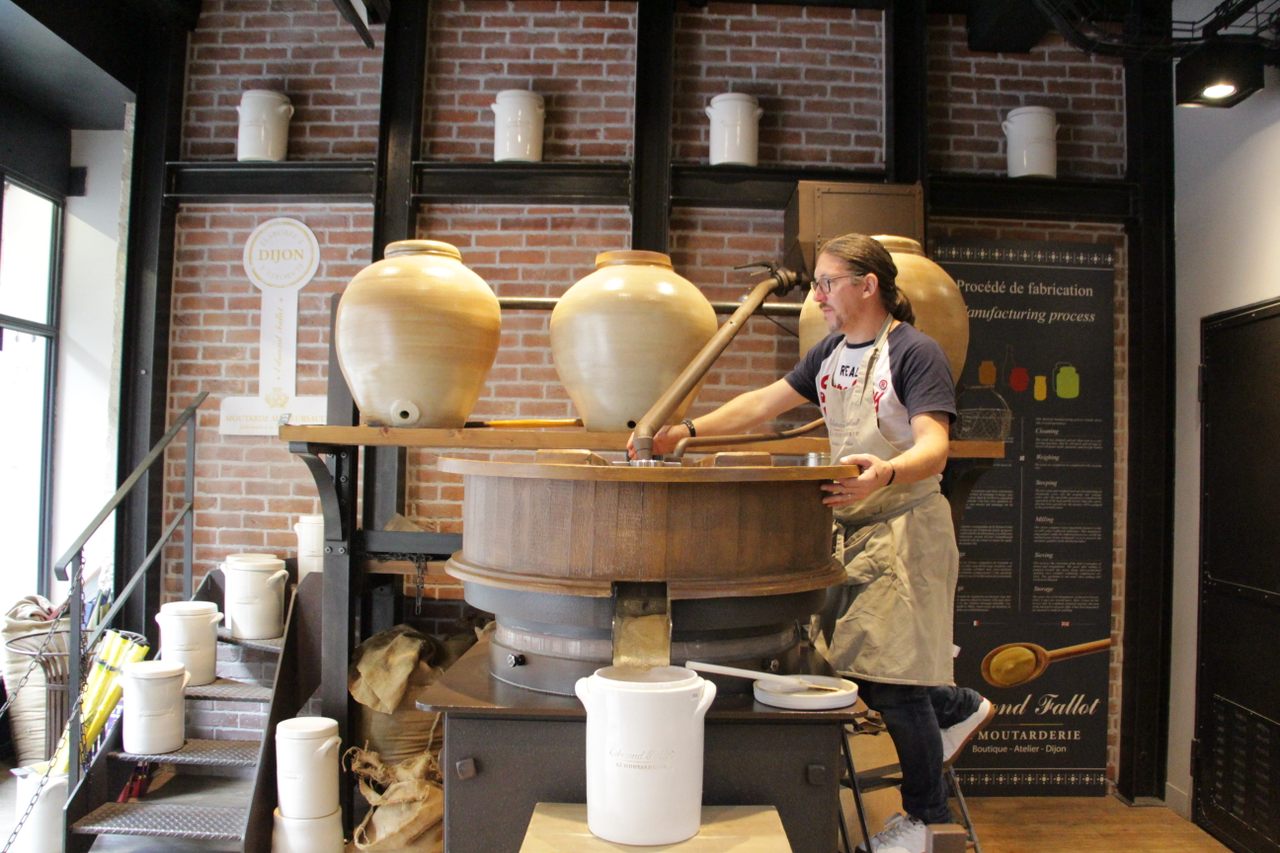
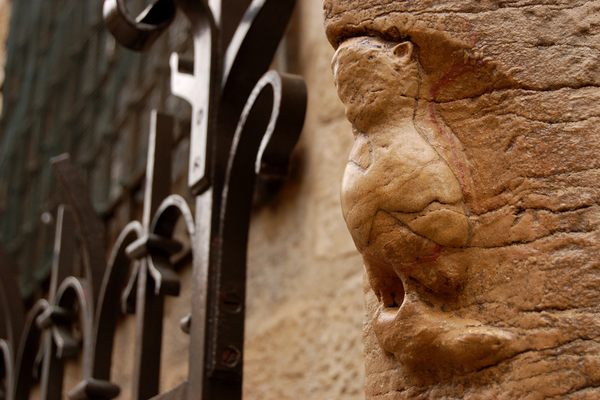





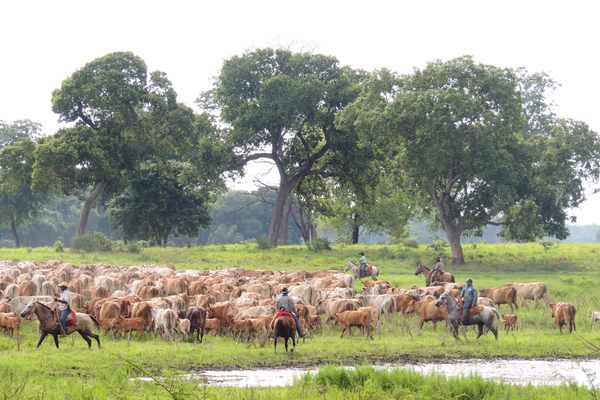















Follow us on Twitter to get the latest on the world's hidden wonders.
Like us on Facebook to get the latest on the world's hidden wonders.
Follow us on Twitter Like us on Facebook